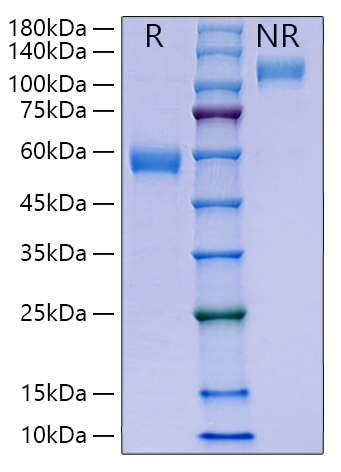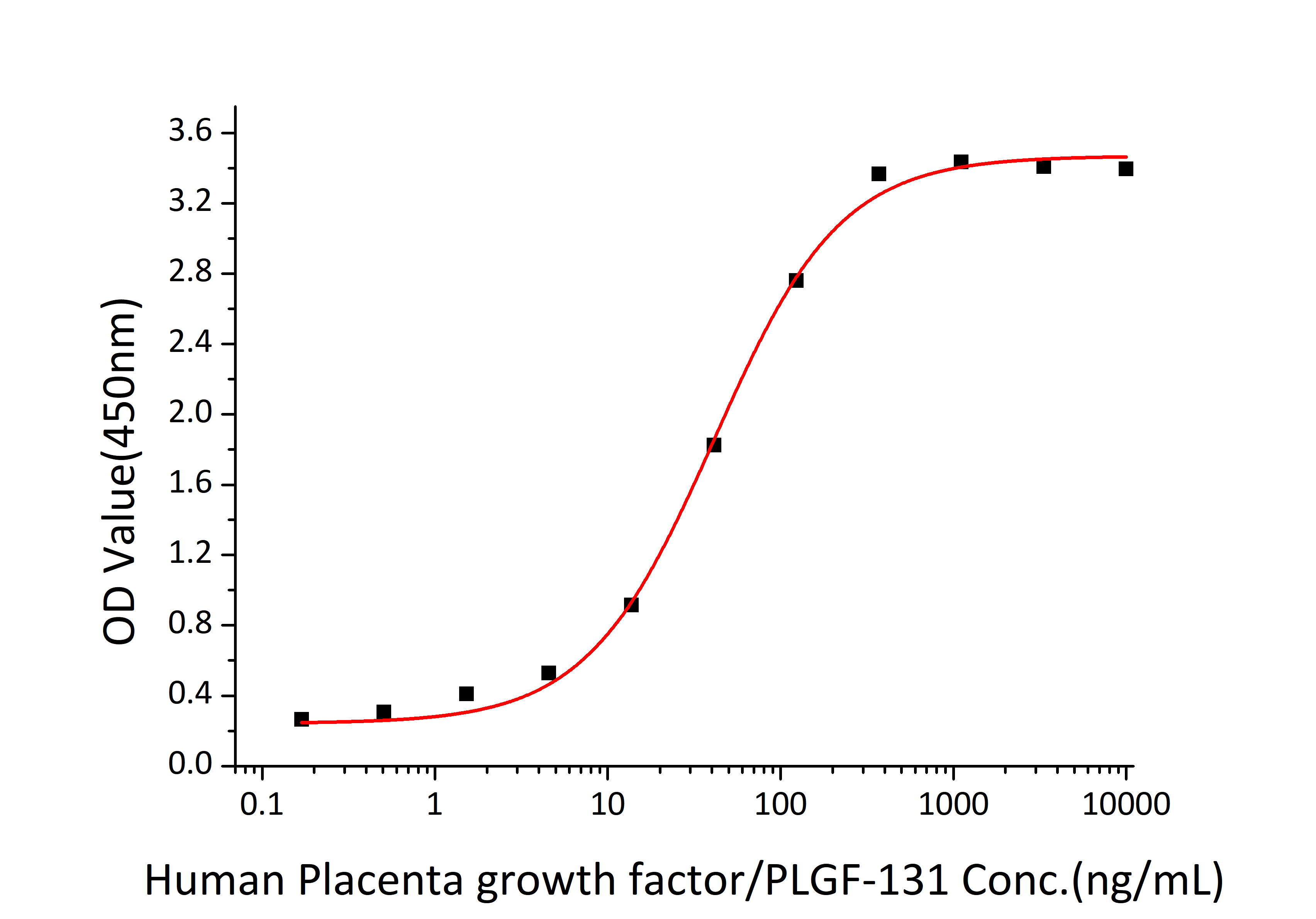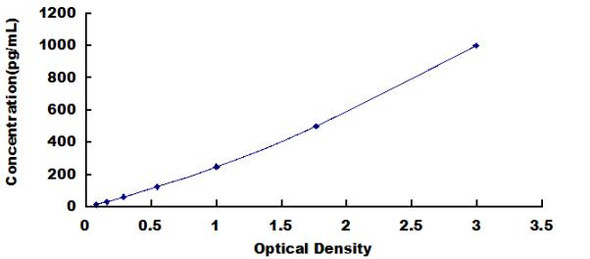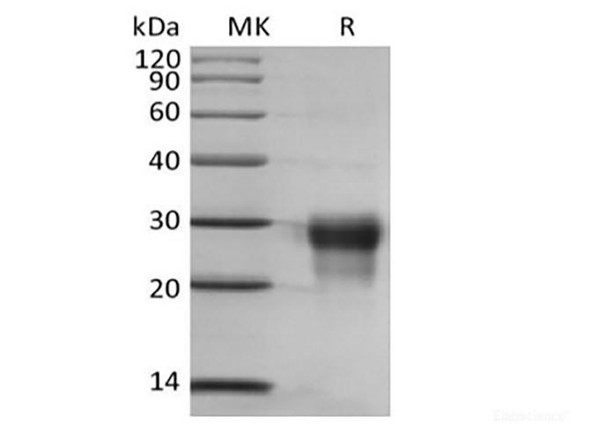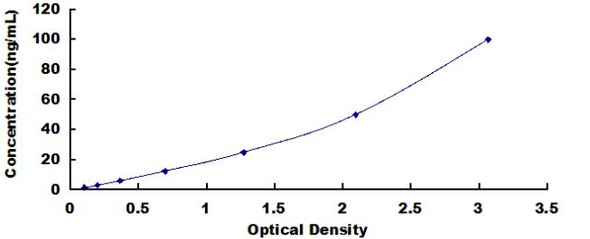Description
Recombinant Human Placenta growth factor/PlGF-131/PlGF-1 Protein
The Recombinant Human Placenta growth factor/PlGF-131/PlGF-1 Protein is a biologically active recombinant protein that plays a significant role in various cellular processes and signaling pathways in human biology. This protein is widely employed in immunological research, cell biology studies, protein-protein interaction analyses, and therapeutic development, providing researchers with a reliable tool for investigating Placenta growth factor/PlGF-131/PlGF-1 function and its implications in health and disease.
This product (SKU: RPCB2188) is produced using HEK293 cells and features a C-hFc tag for convenient detection and purification. The protein exhibits a calculated molecular weight of 40.68 kDa with an observed molecular weight of 55-60 kDa under denaturing conditions, achieving ≥ 95% as determined by SDS-PAGE.. Functional bioactivity has been validated through rigorous quality control assays, confirming its suitability for demanding research applications.
Key Features
| High Purity by Affinity Chromatography | |
| Mammalian & Bacterial Expression Systems | |
| High lot-to-lot consistency via strict QC |
| Product Name: | Recombinant Human Placenta growth factor/PlGF-131/PlGF-1 Protein |
| SKU: | RPCB2188 |
| Size: | 10 μg , 20 μg , 50 μg , 100 μg |
| Reactivity: | Human |
| Synonyms: | D12S1900, PGFL, PIGF, PLGF, PlGF-2, SHGC-10760, PGF, PGFL, PIGF, PLGF, PlGF-2, SHGC-10760 |
| Tag: | C-hFc |
| Expression Host: | HEK293 cells |
| Calculated MW: | 40.68 kDa |
| Observed MW: | 55-60 kDa |
| Gene ID: | 5228 |
| Protein Description: | High quality, high purity and low endotoxin recombinant Recombinant Human Placenta growth factor/PlGF-131/PlGF-1 Protein (RPCB2188), tested reactivity in HEK293 cells and has been validated in SDS-PAGE.100% guaranteed. |
| Endotoxin: | < 0.1 EU/μg of the protein by LAL method. |
| Purity: | ≥ 95% as determined by SDS-PAGE. |
| Formulation: | Lyophilized from a 0.22 μm filtered solution of PBS, pH 7.4. |
| Bio-Activity: | Measured by its binding ability in a functional ELISA. Immobilized human VEGFR1/Flt-1 (RPCB0799) at 2 μg/mL (100 μL/well) can bind Human Placenta growth factor/PLGF-131 (RPCB2188) with a linear range of 0.17-41.1 ng/mL. |
| Reconstitution: | Centrifuge the vial before opening. Reconstitute to a concentration of 0.1-0.5 mg/mL in sterile distilled water. Avoid vortex or vigorously pipetting the protein. For long term storage, it is recommended to add a carrier protein or stablizer (e.g. 0.1% BSA, 5% HSA, 10% FBS or 5% Trehalose), and aliquot the reconstituted protein solution to minimize free-thaw cycles. |
| Storage: | Store at -20℃.Store the lyophilized protein at -20℃ to -80 ℃ up to 1 year from the date of receipt. After reconstitution, the protein solution is stable at -20℃ for 3 months, at 2-8℃ for up to 1 week. |
Placenta growth factor (PlGF) is a member of the PDGF/VEGF family of growth factors that share a conserved pattern of eight cysteines (1, 2). Alternative splicing results in at least three human mature PlGF forms containing 131 (PlGF-1), 152 (PlGF-2), and 203 (PlGF-3) amino acids (aa) respectively (1, 2). Only PlGF-2 contains a highly basic heparin-binding 21 aa insert at the C-terminus (1). Human PlGF-1 shares 56%, 55%, 74% and 95% aa identity with the comparable isoform of mouse, rat, canine, and equine PlGF, respectively. PlGF is mainly found as variably glycosylated, secreted, 55-60 kDa disulfide linked homodimers (3). Mammalian cells expressing PlGF include villous trophoblasts, decidual cells, erythroblasts, keratinocytes, and some endothelial cells (1, 4-6). Circulating PlGF increases during pregnancy, reaching a peak in mid-gestation; this increase is attenuated in preeclampsia (7). However, deletion of PlGF in the mouse does not affect development or reproduction. Postnatally, mice lacking PlGF show impaired angiogenesis in response to ischemia (8).


